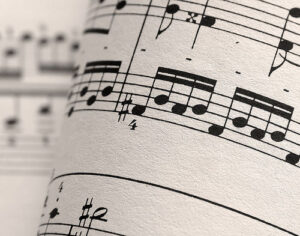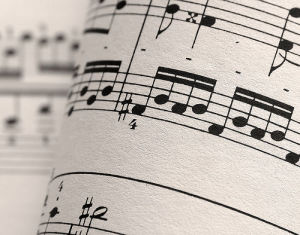How to Prepare a Choral Piece for Your Next Choir Rehearsal

Don’t be ill prepared!
Many of us have been guilty of pulling out music for a choir rehearsal without spending an adequate amount of time really learning the piece. How long would the pastor or Sunday school teacher last if such “lack of preparation” were to be the norm. My dad would say “anything that is worth doing is worth doing right.” The ministry of music is a vital part of our worship services and the preparation should be first and foremost important. Realizing that some music men may not have the training to know how to prepare a song for rehearsal, here is a step-by-step approach.
Follow these steps to prepare your music for a choir rehearsal:
- Divide your choral piece into logical sections (ABA etc.) This called musical form. It’s a way of looking at the music to see its repetition, change, and variation. One can simply name each section using a word, or, as musicians normally do, use different letters to denote a new section.
- Study each section. Look for places where the choir might have difficulty, such as: large interval leaps, rhythmic problems, altered pitches (accidentals), or key changes.
- Sing and play each voice part. You will be able to evaluate how your choir will sight read the piece and it will also help you recognize if a section is singing their part wrong.
- Mark difficult intervals and rhythms in your score. This is sometimes the first place I start when introducing a piece to my choir. Going over those spots first will make the sight reading much easier.
- Play short exercises that will speed the learning of these more difficult passages. If you usually start with a warm-up exercise, try to pick one that prepares the choir for a similar spot in music they will be rehearsing.
- Study the text. It is not enough to just hit right notes or sing right words. Spend some time understanding what the songwriter is saying in the text. I try to get my choir to sing complete thoughts and to communicate the words they are singing.
- Research its scriptural foundation. Choosing music that is scripturally correct is a must. Study His Word to be able to share the spiritual meaning of each verse.
- Use a dictionary to insure correct pronunciation. Diction is the most important aspect of singing. If you fix the vowel sound you will solve the blend and pitch problems. In my opinion, the best way to learn the sounds of a language is to learn the INTERNATIONAL PHONETIC ALPHABET. This is a collection of symbols (not letters) that represents every sound of any language. Without singing the correct sounds you choir will at best sound like a community sing.
- Take special note of sustained vowels and final consonants at the end of phrases. If you listen to your choir you will find this to be true. Be sure your choir does not turn the vowel too soon.
- Determine musically and textually logical phrasing and mark where breaths should be taken. Normally your choir wants to take too many breaths and often will break phases and interrupt the thought of the text.
- Note the dynamic markings. Take into consideration the size of your choir. You may have to adjust this accordingly. Normally I will tell my choir to exaggerate the dynamics. I have to be careful in the summer when the air condition is running in the auditorium our soft (piano) can be drowned out.
The best choir directors have high goals for their choirs and don’t give up until they get what they want–in terms of sound, accuracy, and musical expression. Following these steps to preparing a choral piece will get you headed in the right direction for your next choir rehearsal.
Do you have any other way you prepare your music for a choir rehearsal?
